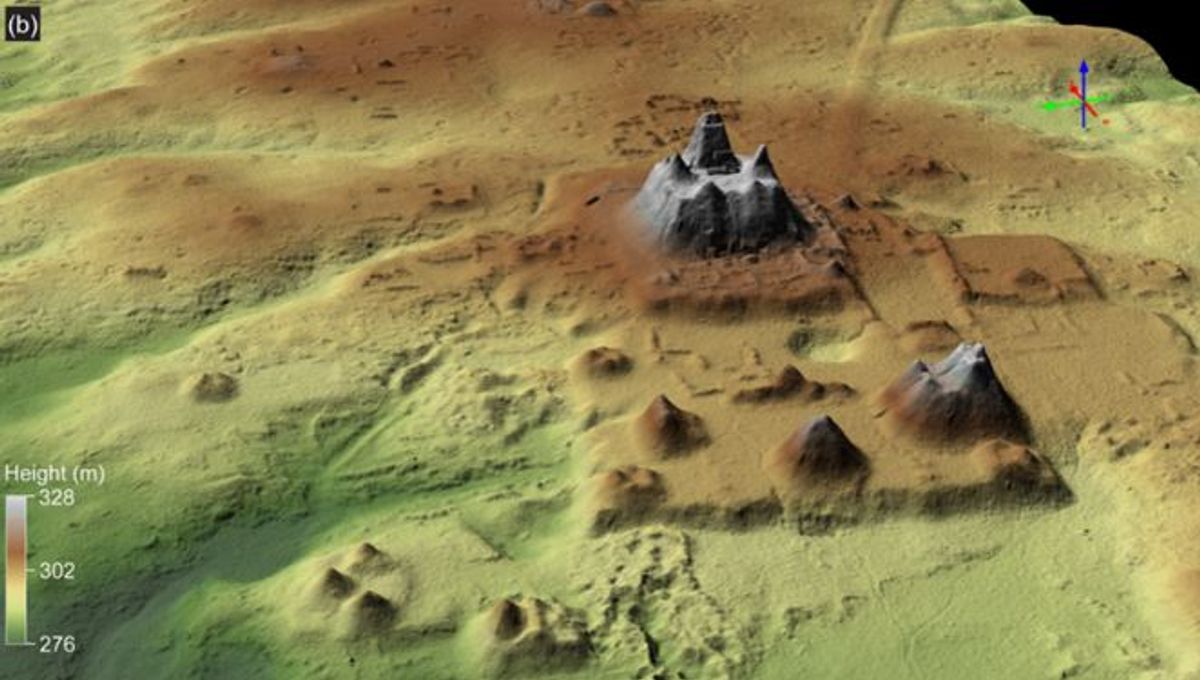
A previously unidentified Maya civilization made up of 964 interconnected settlements has been discovered in northern Guatemala. Dated to the Preclassic Maya period – which lasted from around 1000 BCE until 150 CE – the scattered sites cover an area of approximately 1,685 square kilometers (650 square miles) and are linked by 177 kilometers (110 miles) of ancient roads.
Researchers spotted the network of settlements using LiDAR, a detection system that bounces laser signals off surfaces in order to reveal hidden features and structures. While flying over Guatemala’s Mirador-Calakmul Karst Basin (MCKB), the team utilized the technology in order to penetrate the thick jungle canopy and expose the ancient constructions lurking beneath.
“The LiDAR survey revealed an extraordinary density and distribution of Maya sites concentrated in the MCKB, many of them linked directly or indirectly by a vast causeway network,” write the researchers in a new study. In total, they found 775 sites within the MCKB itself, with a further 189 located in the surrounding karstic ridge.
These 964 sites were grouped into 417 cities, towns and villages, all of which appear to have formed part of a single unified civilization. “The consistency of architectural forms and patterns, ceramics, sculptural art, architectural patterns, and unifying causeway constructions within a specified geographical territory suggests a centralized political, social, and economic organic solidarity among the occupants,” explain the authors.
Previously, archaeologists had assumed that this low-lying corner of the Maya empire was sparsely populated, yet the complexity of the newly-discovered sites suggests otherwise. “The magnitude of the labor in the construction of massive platforms, palaces, dams, causeways, and pyramids dating to the Middle and Late Preclassic periods throughout the MCKB suggests a power to organize thousands of workers,” say the researchers.
To build such a civilization would have required highly skilled “lime producers, mortar and quarry specialists, lithic technicians, architects, logistics and agricultural procurement specialists, and legal enforcement and religious officials, all operating under a political and ideological homogeneity,” they explain.
Among the many architectural surprises present in the region, the researchers single out the astonishing network of causeways as “one of the crowning achievements” of the ancient Maya. Overall, the team identified 133.22 kilometers (82.8 miles) of roads linking different settlements, with a further 38.23 kilometers (23.8 miles) of intrasite causeway.
The existence of these transport links, they say, would have allowed people to easily visit other settlements while also facilitating collective labor efforts.
Large platforms and pyramids were identified within some sites, suggesting they may have served as political hubs, while a total of 30 ballcourts were found scattered throughout the system.
Furthermore, as the MCKB has no year-round rivers or lakes, the existence of such a large population would have required extensive water collection projects. Accordingly, the researchers found 195 artificial reservoirs, as well as a network of canals for transporting water around the region.
The study is published in the journal Ancient Mesoamerica.
Source Link: Enormous Maya Civilization Discovered, Complete With Roads, Reservoirs, And Ballcourts